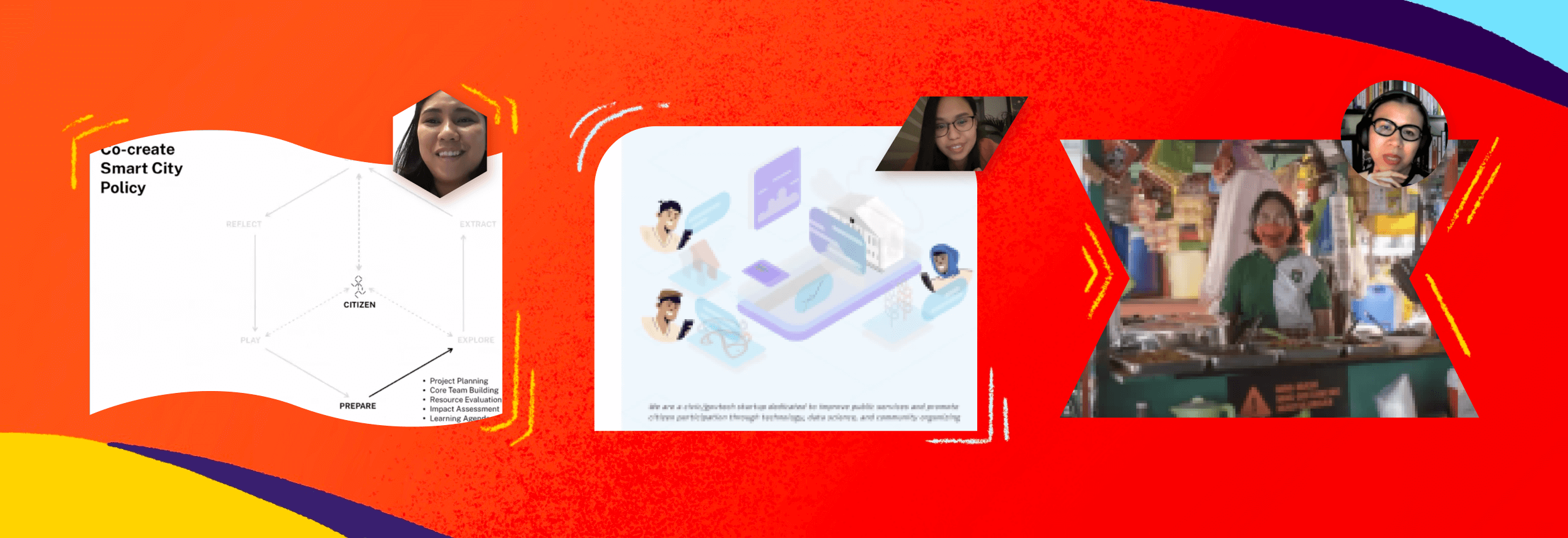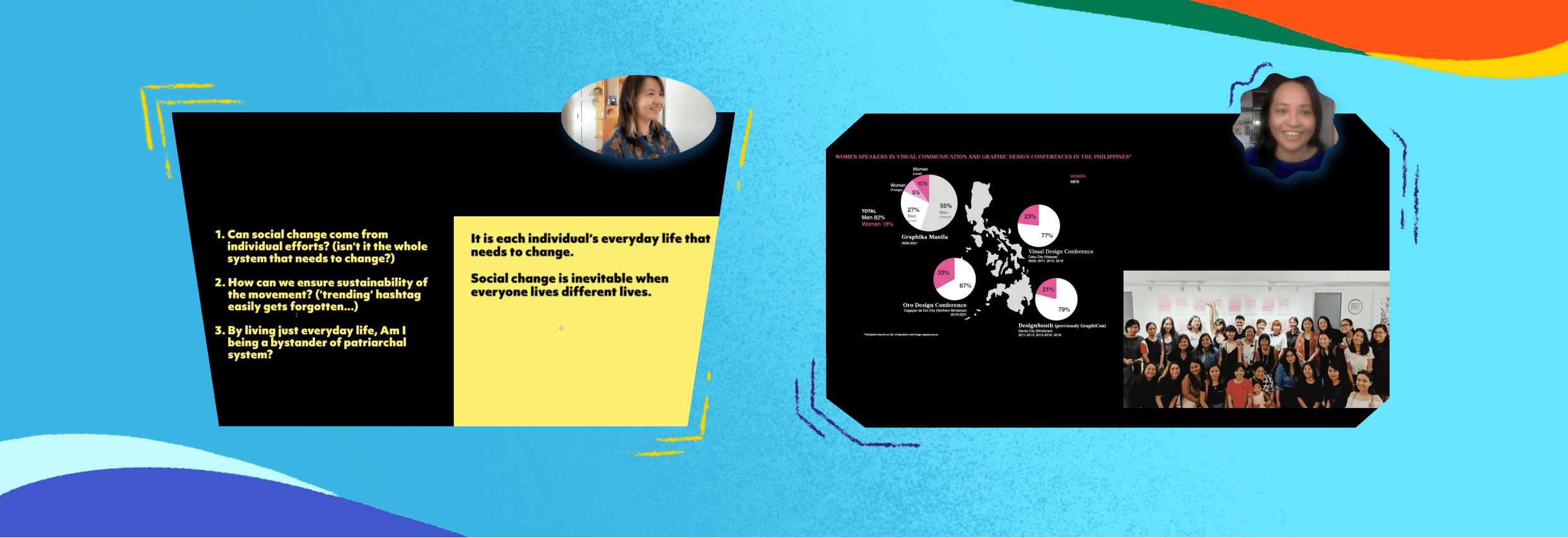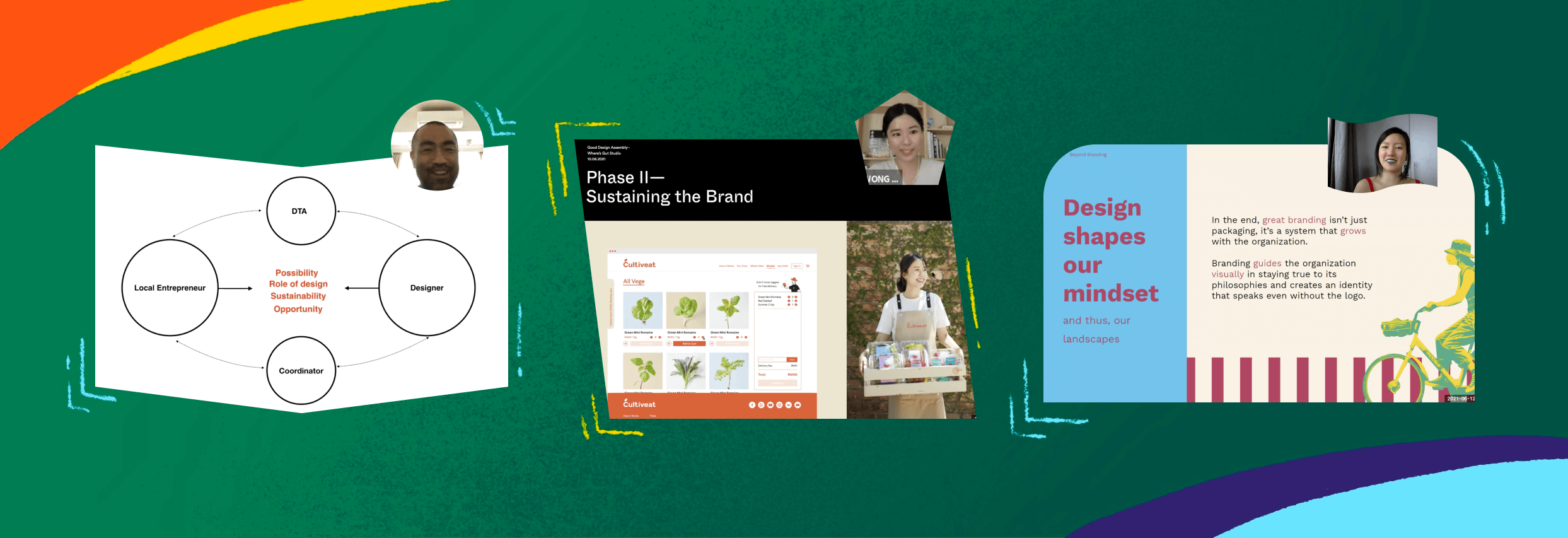
One of the important aspects of doing social impact design that I always hear is being immersed in culture and engaged in activities with the community. But when the pandemic struck, we were all kept inside—looking out our windows and looking at our computer screens. We were suddenly forced into a state of uncertainty and were distanced from other people. It felt impossible for me to connect with people and be part of a team to create impact when I couldn't even meet them in person.
On my first week at Works of Heart, I was welcomed by the team’s latest self-initiated project, the Good Design Assembly. The team initially wanted to create a space where they could learn from other social impact design studios, but this idea grew into a bigger event for everyone interested in the same goal for social impact. The objectives for the event were to explore ways of designing for good and to showcase projects and organizations that have created a positive impact with the aid of design as Paulina Badion, project manager at Works of Heart and of the event itself, explained on how the event came about.
The panelists—which included designers, design leaders, and founders of organizations all across Asia—led conversations about designing with citizens and the government, rallying women in design, and the impact of branding on purpose-driven organizations. By inviting creatives from different cultures and organizations, we wanted to explore new ways of thinking and how different or similar design processes are.
"By inviting creatives from different cultures and organizations, we wanted to explore new ways of thinking and how different or similar design processes are."
Starting my first week with the event's objectives in mind, I could see that we could still go beyond the restrictions and lockdowns the pandemic brought us and continue creating meaningful design even if we are stuck in the 4 walls of our home.
Don’t let go of the opportunity for change
Working with the government can be challenging but hearing someone talk about little changes we can conquer brings back hope. One of the statements that resonated with me was that “patience and tenacity make change,” which one of the speakers Lei Motilla of AI4GOV—a social innovation for improving public services in the Philippines—said in the first talk of the event entitled Designing with Citizens and Government. She spoke with so much perseverance that one needs to enable work through and within the entangled web of bureaucracy in governance. For today’s generation, it seems more difficult day by day to strive for change, to overcome the sense of hopelessness as most would feel, and to cooperate with the government as designers and impact organizations. But Lei advises to “shake [the system] gently to transform it.” We expect fast change but knowing that it is difficult, we need to strive hard to continue the little changes we can do.
Still from the same panel, Thai designer Oum Vipavee Kittitien of Satarana and Attention Studio also believes that the government and citizens should work hand in hand and co-create cities for their people. She shared experiences of rapid urbanization in Bangkok and challenges working with the government, which aren’t unfamiliar to us Filipinos. Although urbanization has values of making cities better it also comes with disadvantages that do the opposite and hinder making a city operate. Hearing designers talk about so much good work that can be done within the government pushes me back a step to see the bigger picture instead of aimlessly moving forward.
"Patience and tenacity make change."
— Lei Motilla, AI4GOV
Rhea Matute, who closed the session, has the same sentiments as her co-speakers, especially as she is working in the government. As the Executive Director of the Design Center of the Philippines and industrial designer she wants to carry on the center's mission of creating good design for economic growth and development in the Philippines. When asked how design can help foster the changes we want to see in the government, Rhea said “You wish the evolution would go faster, so you usher the people’s journey through design and hope they would accept it. It’s a conversation between the people for it to be sustainable.”

Snapshots from "Designing with citizens & government". Oum of SATARANA sharing their participatory design framework; Lei of AI4Gov talking about their solutions for public service; Rhea of Design Center showing photos of their recent project PAALALABAS, a campaign for safety because of COVID-19.
Starting small while managing bigger things
As a feminist myself, I rarely see women designers and creatives being celebrated in the industry. There are designers but "women" are mostly invisible in a statement.
When South Korean designer In-ah Shin founded the Feminist Designer Social Club (FDSC), who opened the second session on Rallying for and with Women, she wanted to start small. She wanted to create a space for women designers to gather and to be celebrated. She was defiant in her belief that her role as a designer and her role as a woman were not two separate things but one. Hearing about FDSC and what they do to keep the conversation on feminism in design going, it gave me another glimpse of hope that there are people trying to make change even if they start small.
Dang Sering, Filipino artist and writer, is also part of the change I'm only beginning to see after listening to the session. She talked about how in every project she is a part of, she highlights the women designers she works with. Dang Sering curated an exhibit, LOOK HERE, a space that brings in women designers in the spotlight, an opportunity that most designers can’t have.

Snapshots from "Rallying women in and for design". In-ah of FDSC sharing questions she asked herself and her final words about making change; Dang of Look Here Exhibit shows statistics of women speakers in Philippine Design Conferences.
Dang Sering, Filipino artist and writer, is also part of the change I'm only beginning to see after listening to the session. She talked about how in every project she is a part of, she highlights the women designers she works with. Dang Sering curated an exhibit, LOOK HERE, a space that brings in women designers in the spotlight, an opportunity that most designers can’t have.
"If people have more needs, we need more people to help."
— In-Ah Shin, Feminist Designer Social Club
Helping people to realize the dream, and convey it
Closing the Good Design Assembly was a talk on Branding Messages of a Better Future. I was already familiar with Mikiharu Yabe of Door to Asia, who has invited a couple of WOH designers to join their designer’s residency program. Dooe to Asia is a designer-in-residence program organized by the Japan Foundation in 2015 wherein designers around Asia produce communication design for local businesses in specific regions. “Helping people to realize the dream and convey the right message” was Mikiharu Yabe’s personal goal. When he talked about the partnership of local businesses in Japan and the Philippines, he showed how he mended possible opportunities between business owners and designers into stronger conversations, gradually creating impact for the work that is being done.

Snapshots from "Branding messages of a better future". Mikiharu-san shares Door to Asia's role and value in bringing small business and designers in Asia together; Mag of Where's Gut shares a case study and the importance of sustaining brands and just building them; Nikki of AltMobility defines how design can make an impact especially in shaping perspectives.
"The story of a brand—its name, logo design, creative direction—should always resonate with who it was designed for." Mag Wong, founder of Malaysian design studio Where’s Gut, shares with us how branding is all about story-telling. She explained that the story doesn't stop with the logo but is followed by a sustainable visual direction in which will guide the audience to the brand's journey. With how a brand tells its story, Nikki Santos-Ocampo, creative director of AltMobility, shares that visually communicating the story and seeing people respond to it is the beginning of social impact. She also explains that although branding does start with a logo, its visual representation of an organization's philosophies should stay true to its identity that even without the logo, you know who they are.
"To guide people with design, is how one should feel about creating social impact."
- Mag Wong, Where's Gut Design Studio
After the event, I saw how the conversation didn't stop at the webinar, but extended to social media and other online platforms. The Works of Heart Team also created a Discord channel after the assembly called the Good Design Club, a space where anyone can open conversations, share opportunities and learning resources with more people. The club has channels for different topics and one of them is #good-conversations, wherein weekly questions are shared to prompt the group into a discussion of relevant issues on impact and design.
As we were distanced from each other with masks, the very walls of our homes, or even different parts of the region, everyone was still able to connect and learn from each other. The Good Design Assembly was intended to start the conversation on design for social impact. Our hope and our challenge is for everyone to take part in expanding our knowledge base on social impact design and to spark more collaboration that positively impact our communities.
